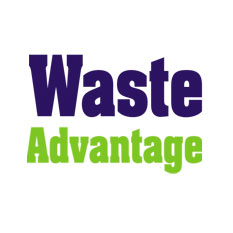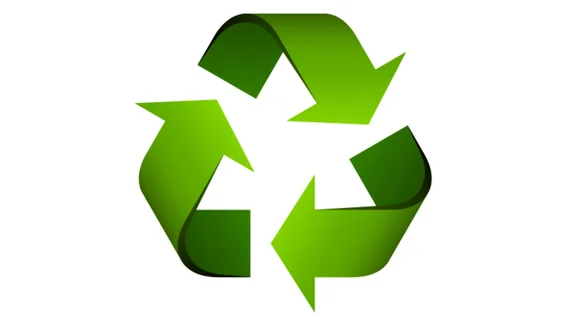This efficient processing approach has additional benefits. Using a low-speed shredder for the first grind reduces the fines in the mulch.
SEATTLE (Waste Advantage): Let’s say you operate a waste processing operation and own a tub grinder or horizontal grinder. Perhaps you have both. You have heard about low-speed shredders and wonder: What can a low-speed shredder do that a high speed grinder cannot? Is it something you need? And can these workhorses work together?
The quick answer is that low-speed shredders are meant to handle a variety of difficult and rugged waste materials, while high speed grinders reduce contaminant-free wood waste into mulch and soil products. Adding a low-speed shredder can help expand your business by opening other potential avenues of revenue.
Understanding Market Opportunities
Three primary markets are driving demand for recycled wood materials, each with unique opportunities for waste processing operations:
- Compost: With more communities implementing policies to eliminate wood, green, and food waste from landfills, the compost market is experiencing significant growth. Operations that can efficiently process clean wood waste into properly sized material for composting are well-positioned to serve municipal contracts and private composting facilities.
- Mulch: Currently larger than the compost market, mulch demand continues to rise as its uses multiply and more people grow their own produce. Quality is crucial in this market—customers want consistent sizing with minimal fines for better color retention and reduced shipping weight. A two-stage processing approach can help achieve these quality standards while maintaining efficient production.
- Biomass and biofuel: A thriving international market, the biomass market in the U.S. holds potential as renewable energy policies evolve. This market requires precisely sized material for efficient burning, making proper processing equipment essential for meeting specifications.
Key Differences in Processing Equipment
When processing potentially contaminated raw material, operators must be prepared for hidden surprises—sledgehammer heads, engine blocks, concrete, and other ungrindable materials. Low speed shredders are specifically designed to handle these challenging materials.
Some low-speed shredders are built to process a wide range of materials: green waste, wood waste, yard waste, construction and demolition debris, and municipal solid waste. Their direct drive systems deliver a more uniform crush while using less horsepower than hydrostatic-powered machines, resulting in superior crushing performance.
High speed grinders are built to efficiently reduce and process wood waste in land clearing, composting, and wood waste processing operations. While the low-speed shredder serves a role in wood waste processing, it is not meant for creating market-ready products like the grinders—it is a crude, simple crush.
Creating a Combined Processing System
The low-speed shredder serves as the first line of defense against contaminants and oversized materials. It typically operates at around 30 rpm to 40 rpm, using high torque to crush and tear material rather than cut it. This slower speed allows for better handling of metal and other hard contaminants, more time for operators to spot and remove unwanted items, and reduced risk of damage from unshreddable objects.
After the initial shredding, the material moves to the high-speed grinder. Operating at a much higher rpm (often over 1,000), these machines can further reduce the material size to meet specific product requirements and create a more uniform end product. The two-stage process results in better product quality across all applications—from mulch with better color retention to precisely sized biomass fuel.
Operational Efficiency
Consider a scenario where the shredder processed large, coarse wood into 12″ to 16″ (30.5 cm to 40.6 cm) sized material, using roughly 12 gallons (45.4 L) of fuel per hour. The high-speed grinder then further reduced this material to a size of 2″ to 3″ (5.1 cm to 7.6 cm), consuming about 15 gallons (56.8 L) of fuel per hour. The fuel usage for this combined process is often less than that of a single machine performing the same operation.
This efficient processing approach has additional benefits. Using a low-speed shredder for the first grind reduces the fines in the mulch. That allows operators with both low speed and high-speed machines to produce various mulch and soil products—and maximize productivity. The reduction achieved in various waste streams at different facilities has been remarkable, opening numerous revenue opportunities:
• Diversified product offerings to meet different market demands, from premium mulch to engineered soils
• Increased processing capacity and throughput through continuous operation
• Access to new markets previously not served, including construction and demolition waste processing
• Reduced disposal costs through increased recycling and material recovery
• Additional revenue from recovered ferrous materials when using shredders with crossband magnets
Looking to the Future
The trend is moving toward low speed shredders complementing high speed grinders to make finished mulch and soil products. Beyond these markets, there is a whole other realm of waste markets such as municipal solid waste, construction, and demolition debris. Those markets continue to see higher and higher volumes of material, and a way to successfully process those is really through a low-speed shredder.
Understanding your incoming material streams helps determine whether you need both types of machines. Optimize your facility layout—efficient material flow can significantly reduce handling costs while improving productivity. Research your local markets to align product offerings with actual demand. The right equipment combination can help transform waste management operations into successful recycling ventures, creating new revenue streams while contributing to environmental sustainability.
Courtesy: www.wasteadvantagemag.com





 Member
Member